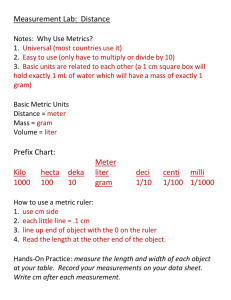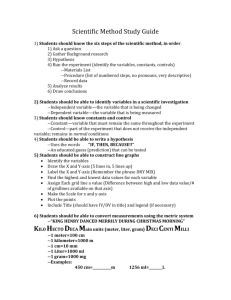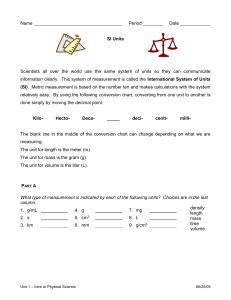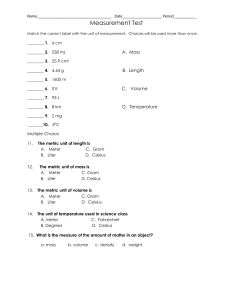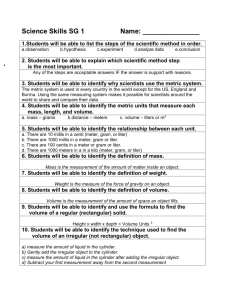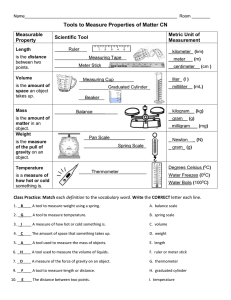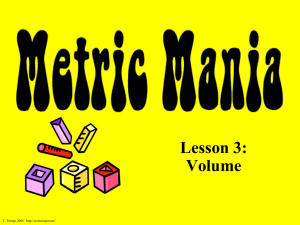Name: Date:______ Period:______ #:_____ Nature of Science
advertisement
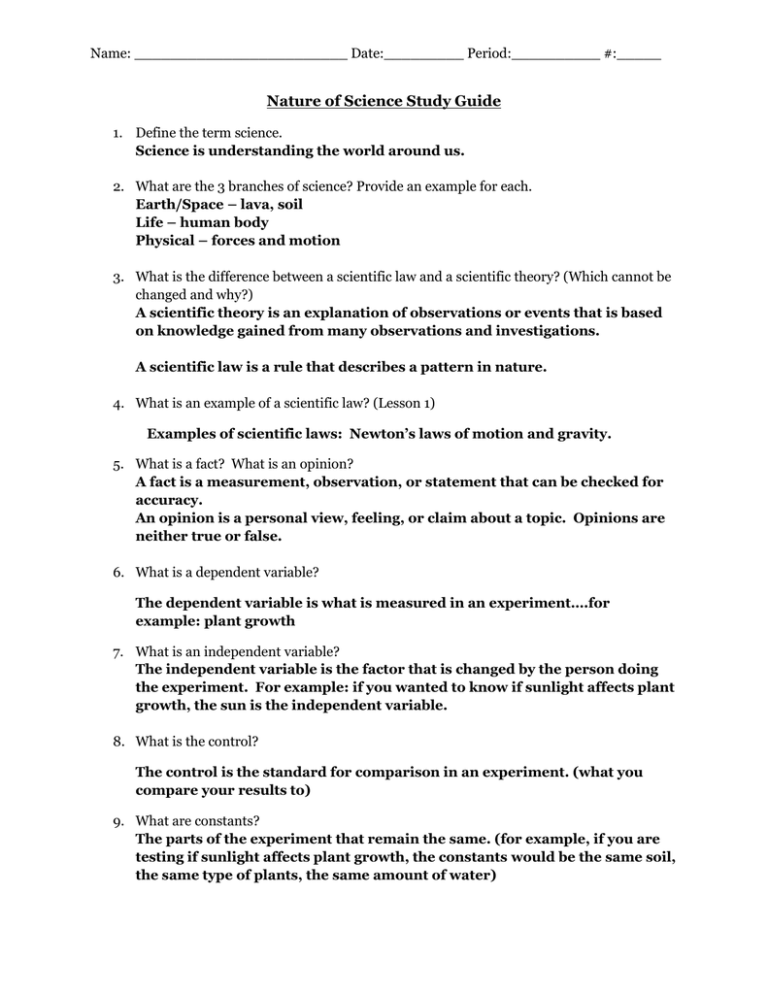
Name: ________________________ Date:_________ Period:__________ #:_____ Nature of Science Study Guide 1. Define the term science. Science is understanding the world around us. 2. What are the 3 branches of science? Provide an example for each. Earth/Space – lava, soil Life – human body Physical – forces and motion 3. What is the difference between a scientific law and a scientific theory? (Which cannot be changed and why?) A scientific theory is an explanation of observations or events that is based on knowledge gained from many observations and investigations. A scientific law is a rule that describes a pattern in nature. 4. What is an example of a scientific law? (Lesson 1) Examples of scientific laws: Newton’s laws of motion and gravity. 5. What is a fact? What is an opinion? A fact is a measurement, observation, or statement that can be checked for accuracy. An opinion is a personal view, feeling, or claim about a topic. Opinions are neither true or false. 6. What is a dependent variable? The dependent variable is what is measured in an experiment….for example: plant growth 7. What is an independent variable? The independent variable is the factor that is changed by the person doing the experiment. For example: if you wanted to know if sunlight affects plant growth, the sun is the independent variable. 8. What is the control? The control is the standard for comparison in an experiment. (what you compare your results to) 9. What are constants? The parts of the experiment that remain the same. (for example, if you are testing if sunlight affects plant growth, the constants would be the same soil, the same type of plants, the same amount of water) Name: ________________________ Date:_________ Period:__________ #:_____ 10. What is the importance of the International Systems of Units? All scientists around the world use the same units a. Base Unit of Temperature -Kelvin b. Amount of a Substance – Gram c. Base Unit of Measurement – Meter d. Volume of Liquids - Liter 11. Scientific Tools: a. Thermometer –A tool used to measure temperature. b. Graduated Cylinder – 3 steps in reading a graduated cylinder: 1.____Place on a flat surface 2.____Get eye-level 3.____Read at the meniscus c. Triple Beam Balance – A tool used to measure mass in grams d. 12. Steps of the Scientific Method: 1. Question 2. Hypothesis 3. Design and conduct experiment 4. Analyze data 5. Draw conclusions 6. Communicate results to others 13. How do you test a hypothesis? You can design and perform an experiment, collect data and record observations, or make a model 14. What is the difference between a qualitative observation and quantitative observation? A qualitative observation does not involve measurement or numbers. A quantitative observation involves measurement or numbers. 15. What is an inference? An inference is an explanation of an observation……..why something happened. 16. Complete the Metric Conversion Chart: Name: ________________________ Date:_________ Period:__________ #:_____ m km hm dkm Meter dm cm kl hl dkl Liter dl cl kg hg Gram dg dkg Examples: 1. 42 mg = ___.042_________ g 2. 12 km = ____120________ hm 3. 0.65 cm = ___6.5________ mm 4. 1.89 L = ____1890_________ mL 5. 7.4 hg = ____740__________ g cg mm ml mg
